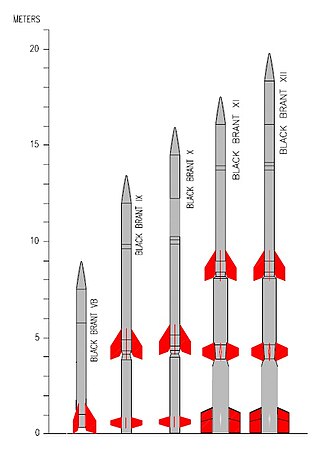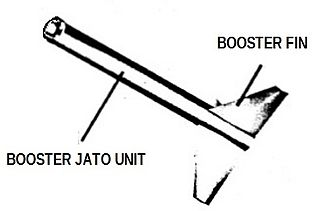Related Research Articles

JATO is a type of assisted take-off for helping overloaded aircraft into the air by providing additional thrust in the form of small rockets. The term JATO is used interchangeably with the term RATO, for rocket-assisted take-off.

Soyuz is a family of expendable Russian and Soviet carrier rockets developed by OKB-1 and manufactured by Progress Rocket Space Centre in Samara, Russia. With over 1,900 flights since its debut in 1966, the Soyuz is the rocket with the most launches in the history of spaceflight.

The Delta rocket family is a versatile range of American rocket-powered expendable launch systems that has provided space launch capability in the United States since 1960. Japan also launched license-built derivatives from 1975 to 1992. More than 300 Delta rockets have been launched with a 95% success rate. The series has been phased-out in favor of the Vulcan Centaur, with only the Delta IV Heavy rocket's last rocket launch due to occur in March 2024.

The Black Brant is a family of Canadian-designed sounding rockets originally built by Bristol Aerospace, since absorbed by Magellan Aerospace in Winnipeg, Manitoba. Over 800 Black Brants of various versions have been launched since they were first produced in 1961, and the type remains one of the most popular sounding rockets. They have been repeatedly used by the Canadian Space Agency and NASA.

The Saturn IB(also known as the uprated Saturn I) was an American launch vehicle commissioned by the National Aeronautics and Space Administration (NASA) for the Apollo program. It uprated the Saturn I by replacing the S-IV second stage, with the S-IVB. The S-IB first stage also increased the S-I baseline's thrust from 1,500,000 pounds-force (6,700,000 N) to 1,600,000 pounds-force (7,100,000 N) and propellant load by 3.1%. This increased the Saturn I's low Earth orbit payload capability from 20,000 pounds (9,100 kg) to 46,000 pounds (21,000 kg), enough for early flight tests of a half-fueled Apollo command and service module (CSM) or a fully fueled Apollo Lunar Module (LM), before the larger Saturn V needed for lunar flight was ready.
The Berthold Seliger Forschungs- und Entwicklungsgesellschaft mbH (BSFEGmbH) was a company founded by West German rocket technical designer Berthold Seliger in 1961. Seliger was a former assistant theoretician professor Dr. Eugen Sänger. The company developed and built prototypes of sounding rockets and launched them near Cuxhaven. The BSFEGmbH cooperated strongly with the Hermann-Oberth-Gesellschaft, of which Berthold Seliger was a member. The first rocket developed by the BSFEGmbH was an improved version of the Kumulus, which was first launched on 19 November 1962 and reached a height of 50 kilometres. On 7 February 1963 the BSFEGmbH launched a two-stage rocket with a maximum height of 80 kilometres and, on 2 May 1963, they launched a three-stage rocket with a maximum flight height of more than 100 kilometres. The latter rocket may have attained the highest flight altitude of all rockets built in post-war Germany. The signals from all these rockets were also received at the observatory in Bochum. After May 1963 the BSFEGmbH worked on the improvement of the steering system of their rockets and thought also on military usable rockets.
Kumulus is the name of a rocket of the "Hermann-Oberth-Gesellschaft e.V.". The first Kumulus rocket was launched on December 20, 1960, near Cuxhaven. A Kumulus rocket is on display at the Hermann Oberth Space Travel Museum in Feucht.
The Hermann Oberth Gesellschaft (1952-1993) was an association named after Hermann Oberth, the German astronautics pioneer and the authoritative expert on rocketry outside the United States, which develops and builds rockets and trains engineers in space technology.
Between 1933 and 1964 numerous rocket experiments were carried out in the area of Cuxhaven, Germany.
The Mohr Rocket was a sounding rocket developed by Ernst Mohr in Wuppertal, Germany.

Bélier is the designation of a French sounding rocket family. Three versions of the Bélier were launched between 1961 and 1970 at the CIEES launch facility at Hammaguir, the Salto di Quirra and Ile du Levant missile ranges, and Kourou Space Center.
Cora was a French experimental rocket. It was the largest rocket ever launched in Western Europe. It was primarily used for testing the second (Coralie) and third stages (Astris) of the multinational Europa Rocket, which was developed and produced by the European Launcher Development Organisation, the predecessor to the present day European Space Agency.
Astrobee is the designation of series of American sounding rockets with one to three stages.

Cajun Dart is the designation of an American sounding rocket. The Cajun Dart was used 87 times between 1964 and 1970. The Cajun rocket motor was developed from Deacon.

Arcas was the designation of an American sounding rocket, developed by the Atlantic Research Corp., Alexandria, Va.

The Aggregat series was a set of ballistic missile designs developed in 1933–1945 by a research program of Nazi Germany's Army (Heer). Its greatest success was the A4, more commonly known as the V2.
Tronador is a series of Argentine rockets, including the Tronador I and Tronador II vehicles, to develop a liquid-propellant rocket expendable launch system called ISCUL.

The Nike stage or Nike booster, a solid fuel rocket motor, was created by Hercules Aerospace for the Nike Ajax (M5) Nike Hercules (M5E1). It was developed for use as the first stage of the Nike Ajax and Nike Hercules missiles as part of Project Nike.

The Algol family of solid-fuel rocket stages and boosters is built by Aerojet and used on a variety of launch vehicles. It was developed by Aerojet from the earlier Jupiter Senior and the Navy Polaris programs. Upgrades to the Algol motor occurred from 1960 until the retirement of the Scout launch vehicle in 1994.
LinkSpace or Link Space Aerospace Technology Inc. is a Chinese private space launch company based in Beijing. It is led by CEO Hu Zhenyu, and founded as the first private rocket firm in China. The company was founded in 2014, by Hu Zhenyu, a graduate of South China University of Technology; Yan Chengyi, a graduate of Tsinghua University; and Wu Xiaofei, a manufacturing expert. The company is registered in Shenzhen.
References
- ↑ "Seliger Rocket". 2005-01-19. Archived from the original on 2005-01-19. Retrieved 2024-02-20.